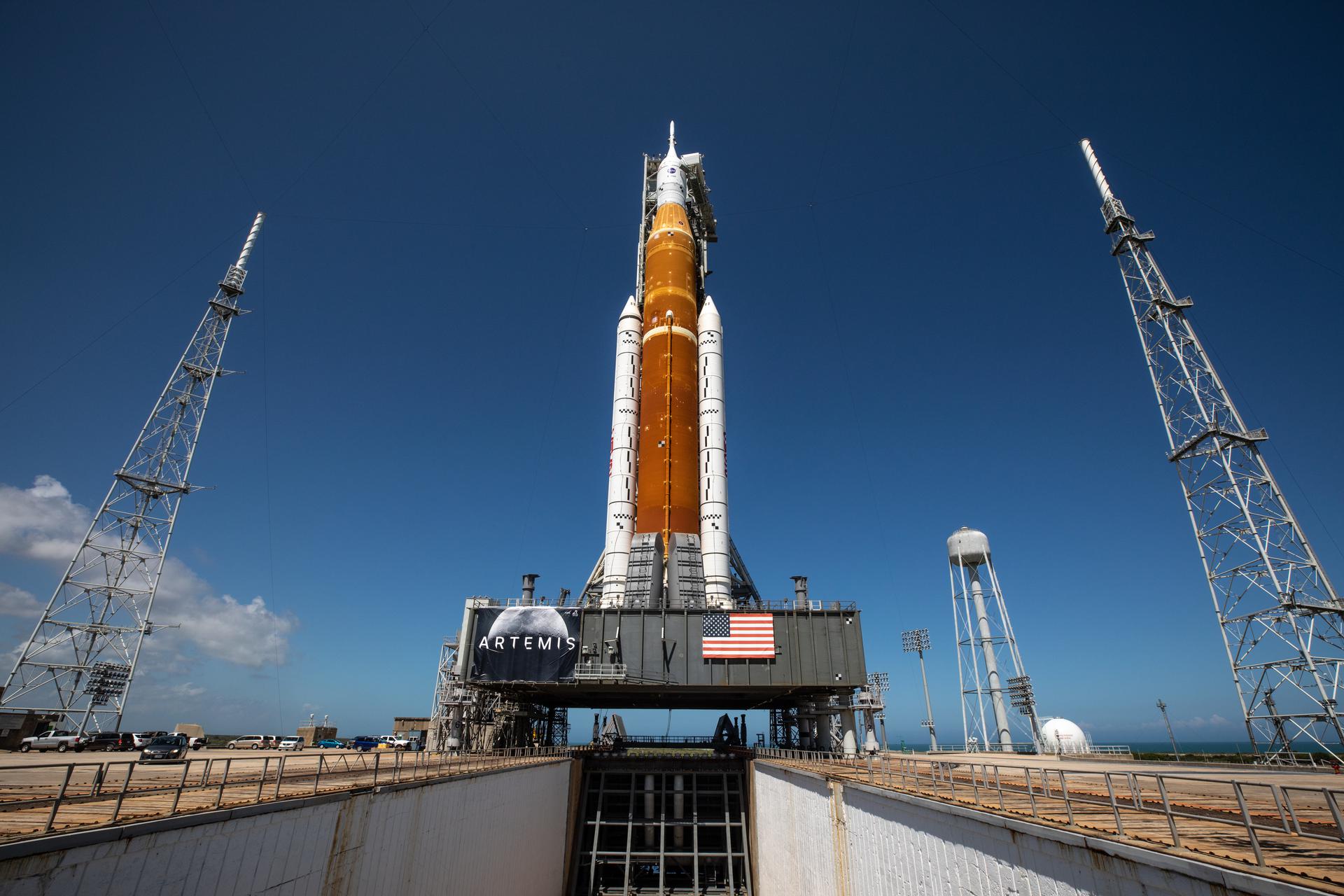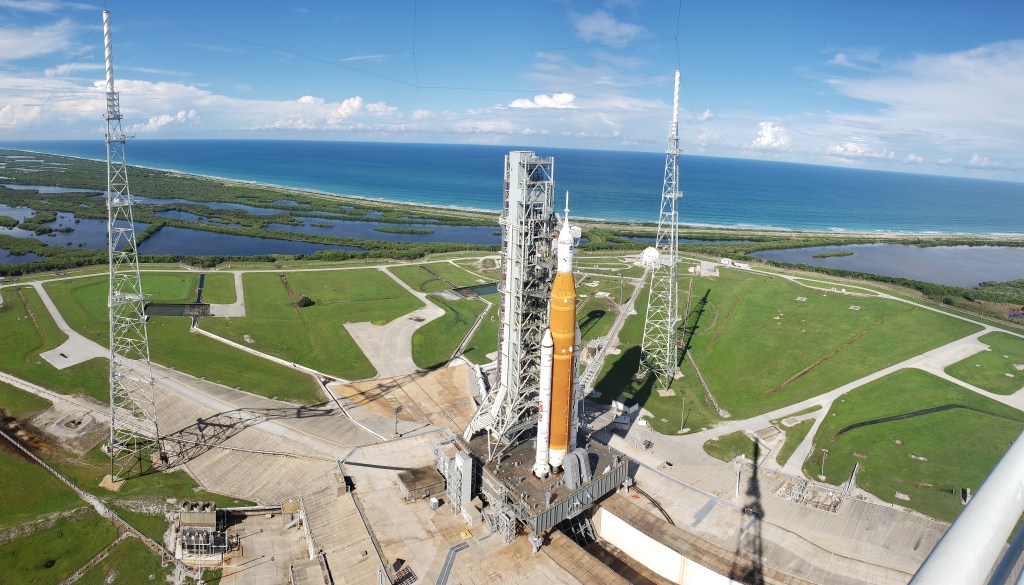
Exploration Ground Systems has prepared Launch Pad 39B at NASA’s Kennedy Space Center in Florida to support the agency’s Artemis missions. Under Artemis, NASA will land the first woman and first person of color on the Moon. Orion will launch atop the Space Launch System (SLS) rocket to carry astronauts to space, provide emergency abort capability, sustain the crew during space travel, and provide safe re-entry from deep space return velocities. NASA will develop a sustainable presence at the Moon and apply knowledge gained to pave the way for human exploration of Mars.
The pad supported the first mission, Artemis I, which sent an uncrewed Orion spacecraft, launched atop the SLS rocket, beyond the Moon and back to Earth. Work is in progress on a new liquid hydrogen tank and emergency egress system for Artemis II, the first crewed launch.
Pad subsystems used for Apollo and the Space Shuttle Program were replaced or upgraded to support the SLS and 21st century multiuser spaceport. The guiding principle behind the upgrades and modifications has been to make the area a “clean pad,” which allows a variety of rockets to launch from the pad. The basics that every rocket needs are in place, such as electrical power, a water system, flame trench and safe launch area. The other needs of individual rockets, including access for workers, can be met with the towers or other structures that deliver the rocket to the pad.
Apollo 10 was the first mission to begin at Launch Pad 39B when it lifted off May 18, 1969, to rehearse the first moon landing. Three crews of astronauts launched to the Skylab space station in 1973 from Pad B. Three Apollo astronauts who flew the historic Apollo-Soyuz Test Project mission to link up in space also launched from Pad B.
Fun Facts:
- During refurbishment projects, 1.3 million feet of copper cables were removed and replaced with 300,000 feet of fiber cable.
- The water tower for the Ignition Overpressure and Sound Suppression System (IOP/SS) holds roughly 400,000 gallons of water, or enough to fill 27 average pools. This water is dumped on the mobile launcher and inside the flame trench in less than 30 seconds. The IOP/SS peak flow rate is 1.1 million gallons per minute, high enough to empty roughly two Olympic-size swimming pools in one minute.
- The three lightning towers are about 600 feet tall – taller than the Vehicle Assembly Building, which is 525 feet tall.
- The refurbished flame trench and new flame deflector will be exposed to a peak temperature of 2,200 degrees Fahrenheit during launch.
- More than 96,000 bricks were installed on the walls of the flame trench during the refurbishment project.
- The flame trench is 450 feet long, equal to the length of one and a half football fields.
Launch Pad 39B
Significant upgrades and enhancements have been completed at Kennedy Space Center's Launch Complex 39B to support future Artemis launches.
Learn More


























